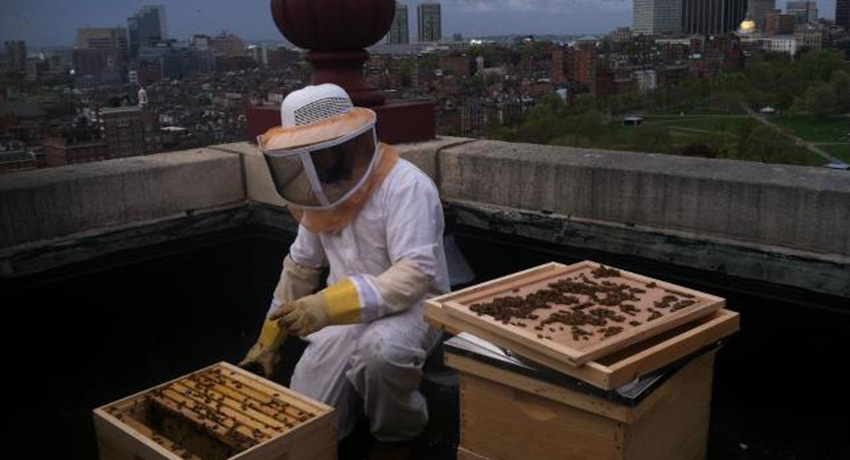Bees That Swarmed Yellow Car in Dorchester Now Living in the South End
On Monday in Dorchester, this happened:
This car in Uphams Corner is covered in bees! @universalhub @massaudubon @pdrosso @oldmanwalkey @notifyboston twitter.com/OFFtheDOT/stat…
— Off the Dot (@OFFtheDOT) May 6, 2013
Naturally, the yellow car swarmed by bees led to quite a bit of speculating about how to take care of a situation like this. But that was before the pros were called in. Noah Wilson-Rich, a behavioral ecologist and founder of The Best Bees Company, headed to the scene to help out with relocating what he estimated are 45,000 to 50,000 bees looking for a new home.
“I received a call from the Boston Redevelopment Authority. He let me know that there was a swarm of honey bees on a car in Dorchester,” says Wilson-Rich, who spoke to us recently about how honeybees are endangered globally but thriving in Boston (no kidding). “He connected me with Animal Control. I told him that I would head on over. He let me know that there was a large crowd, with police and media waiting for me. When I got there, I immediately saw the bright yellow car with the largest swarm I’ve ever seen in my life!”
Wilson-Rich says that the bees were likely attracted to the car because of its yellow color, which is just like a flower. Police asked him if there could be a decomposing body or anything in the trunk that might attract them. “I let them know that these honeybees are no more attracted to dead bodies than people are. They are attracted to flowers, and that’s pretty much it. In fact, when I opened the trunk, there was only a baby carriage folded up inside,” he says.
Wilson-Rich put on his beekeeper’s suit and used a bee brush to gently move the swarm into a special box called a “nuc box,” which is short for nucleus, or core hive. “The swarm was so large that I had to return to the Urban Beekeeping Lab [his lab in the South End] to get two more boxes, then return to the yellow car, and finish brushing the bees in. The crowd had dispersed by the time I returned.”
These bees were then installed into a new hive, made of hand-crafted wood and wax parts, at the lab. They are now living in their new, temporary home in the lab’s protected parking lot. “This is a very sweet, albeit large, hive,” Wilson-Rich says. “The bees are under special care and being fed local, fresh honey. Once they settle down, we’ll decide where they should go permanently. We are open to suggestions!”

Noah Wilson-Rich installing honeybee hives on the roof of the Taj Hotel. (Photo provided)


